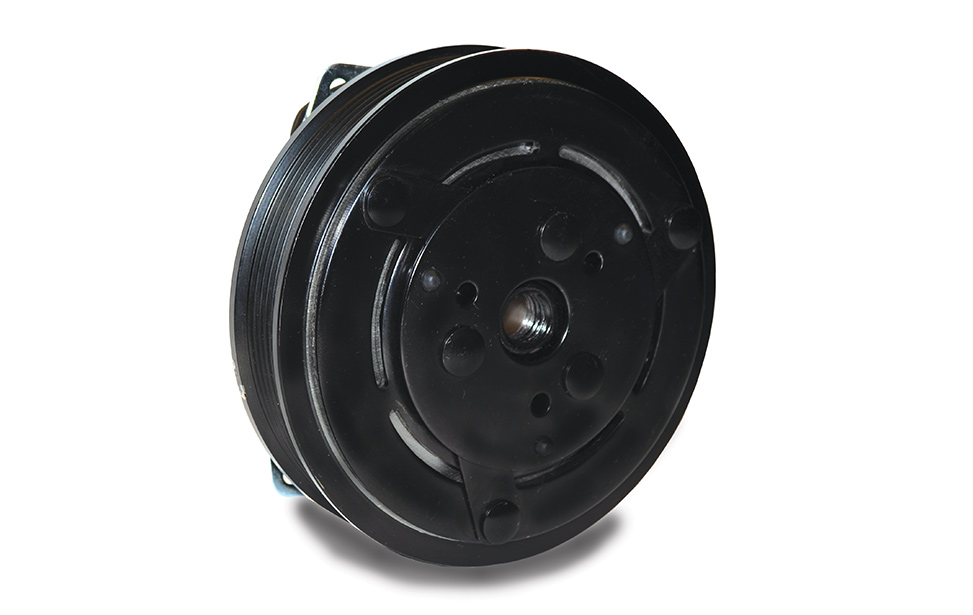Pump Clutches For Hydraulic Systems

Principles of Operation
An electric clutch operates on the basic principle of magnetic attraction. Closing a switch sends electric current to an electromagnet or “field”, producing a strong magnetic attraction which concentrates around the magnetic poles of the field. The magnetic attraction jumps the small air gap between the field and the rotor, effectively making the rotor a spinning magnet. This “magnet” attracts the armature, grips it tightly and causes it to turn with the rotor. Opening the switch turns off the magnet, disengaging the clutch.
Magnetic Circuit
The heart of an electric clutch is its field assembly, with an electric coil to produce magnetism and iron magnet housing to direct that magnetism through the rotor to most effectively attract the armature. The illustration on the right shows how the rotor and armature surfaces of Warner Electric clutches are slotted and grooved. Magnetism, also called magnetic “flux”, concentrates at the poles of the field housing and jumps to the outer rims of the rotor. The flux passes through areas where contact is most intimate between the armature and rotor faces. Concentrating the magnetic attraction at these poles rather than over the entire face creates a strong attraction between the armature and rotor. The result is a great deal of torque in a small clutch.
Features
- 68 Nm to 271 Nm static torque capacity
- Various pulley configurations available
